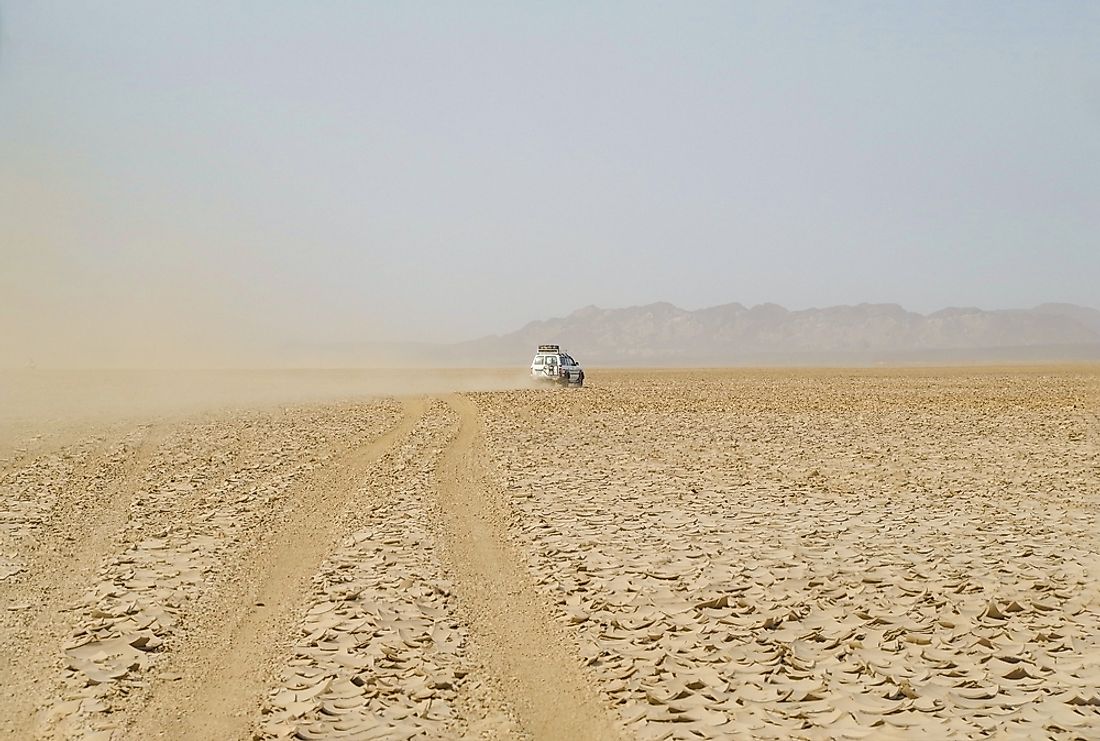The Afar Triangle - Unique Places in Africa

East Africa is home to Africa’s longest geological feature, the Great Rift Valley. The northernmost part of the Great Rift Valley features a large geological depression known as the Afar Triangle. The depression is named after the Afar ethnic group who inhabit the region, while the term “triangle” represents the triangular shape of the geological depression when viewed on a topographical map. The Afar Triangle is East Africa’s most geologically active region and is made up of active volcanoes, salt lakes, and lava lakes.
5. Threats
One threat to the Afar Triangle comes from its geological structure as it sits on one of the most geologically active regions on earth, on which three tectonic plates are said to be moving away from each other at a rate of about 0.8 inches each year. Ultimately, geologists believe the Somalian African Plate will tear away from the Nubian African Plate and the Red Sea will flood the ensuing valley forming a new water body similar to the Red Sea. The formation of the new sea will result in the Afar Triangle being submerged under water. According to geologists, the Afar Triangle is expected to be submerged about 10 million years in the future.
4. History
The Afar Triangle’s history goes back millions of years to the formation of the African Great Rift Valley. The Afar Triangle was formed after two tectonic plates; the Somalian African Plate and the Nubian African Plate started separating from each other during the Miocene epoch about 11 million years ago. The region is home to one of the earliest hominid remains yet discovered on earth, with the fossil of a female Ardipithecus ramidus being unearthed in the region. This extinct hominid species is believed to be a prehistoric human ancestor with the skeletal remains being about 4.4 million years old. The discovery of the ancient hominid makes the Afar Triangle a likely candidate for the cradle of humanity.
3. Structure
The Afar Triangle exhibits extremities in topography, having towering active volcanoes and depressions. The Erta Ale is a towering shield volcano found in the Afar Triangle, which rises 2,011 feet in elevation. The region is also home to Africa’s lowest point, Lake Asal which lies 509 feet below sea level. The Awash River is the main river that flows through the Afar Triangle, and it ends up as a chain of salt lakes found about 80 miles from the Red Sea. The region’s vegetation is adapted for its desert-like climatic conditions and is primarily made up of shrubs and grasses. Small trees can also be found in the region, albeit in small concentrations.
2. Tourism
The region is endowed with natural tourist attractions, with its beautiful landscapes and wildlife attracting thousands of tourists each year. Some of the animals found in the Afar Triangle include the ostrich, the secretary bird, Grevy’s zebra, beisa, and the crested francolin among others. The region is noted for being the habitat of the world’s last population of the African wild ass. The Afar Triangle’s exceptional geology is another factor that draws in tourists in their thousands. However, the region has been struggling with rising insecurity in recent years, and the security concerns threaten to soil the Afar Triangle popularity among tourists.
1. Description
The Afar Triangle represents the northernmost portion of the Ethiopian Rift Valley from where the rift valley runs southwards to northern Kenya. The Afar Triangle is situated in the Horn of Africa, with its area encompassing sections of Eritrea, Djibouti, and Ethiopia. The entire Afar Region in Ethiopia is situated inside the depression. The Afar Triangle forms the lowest part, not only of Ethiopia but of the entire continent. The depression is bordered by the Ethiopian Plateau, the Somalian Plateau, and the Danakil block.











